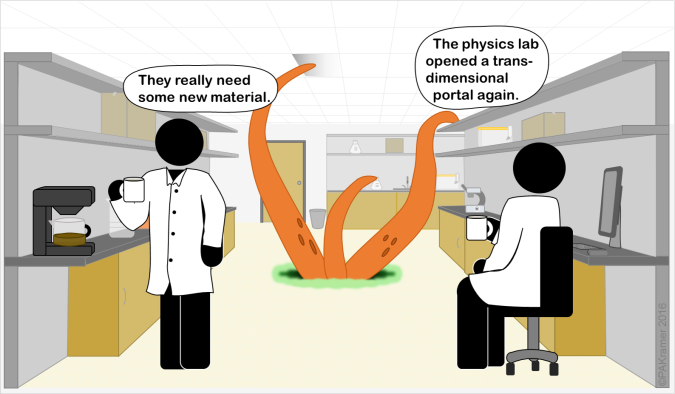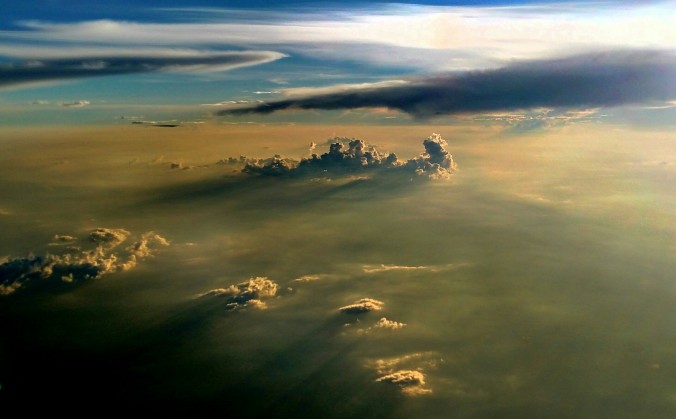
The science of awe.
According to a review of one study, awe-inspiring sights elicit global activity of the autonomic nervous system, but shuts down parts of our parietal lobe, which contains our sense of self and our own boundaries and those of the world around us. In short, our brains are broadening their sense of scale, trying to encompass the vast and beautiful world. This is perhaps why awe also makes our own problems and worries seem insignificant in the grand scope of things. This same review cites a 2012 study showing that awe alters our sense of time, making us feel like we have more of it to spare, and even motivates us to spend more of that time helping others.
We also use awe to describe a sense of fear. This is also a process involving the autonomic nervous system, causing our heart and breathing to speed up, and in some cases, freezing us in place even as danger barrels toward us.
Becoming numb to awe.
Last month I was sitting in the middle seat on a flight to Atlanta from Seattle. I fly a lot, but certainly not as much as the man sitting in the window seat next to me. At one point during the flight, he lifted the blind and peered out for a few seconds before starting to close it again. The one and only time I spoke to the man was to keep him from closing it and to ask if I could take a picture. How he could have peered out the window at such a sight without taking the time to appreciate it was beyond me. The picture barely does it any justice.

The ability to recognize beauty and feel fear is something most of us have. Unfortunately, it is also something we can become numb to with repeated exposure. In my novel, Quotidian, the day is repeating, but not just any day, the last day, the end of the world. The characters experience danger and destruction every day and have ceased to be awed by it, and even death has become something routine.
Make their jaws drop.
From a sun setting over a field of flowers to the plume of a radioactive mushroom cloud, these sights, like so many others, can inspire awe. But there are different levels of awe:
- There is the kind that makes your jaw drop and stare speechless for a time.
- The kind that gives you chills.
- The kind that deserves a nod of appreciation
- And the kind we assign to everything else that barely warrants noticing (in the words of Emmet from The Lego Movie: “Everything is Awesome!”)
It is important to aim for the mind-blowing sort of awe in writing. Why? Because readers have become so overstimulated, that anything less than that will barely register. This concept is important for writers to grasp. If our target audience experiences the same conflicts, the same wonders, love stories, horrors, scifi dramas, etc. they will lose that sense of awe.
Some strategies.
Nowadays it is difficult to create an original plot.
Rather than racking your brain for a new story to tell to awe your readers, try presenting a similar story in a unique way. As my brother is fond of saying, “do it in a way that nobody has ever done it before.” This can be as simple as changing the tone or mood of your story, or changing something about the world, or show things from a new perspective. For example, the scene of a large open field is boring until you put on a pair of glasses that invert your view of the world, and suddenly it feels like you could fall into the sky. This can reawaken your reader’s sense of awe even thought the primary plot and conflict is little different from others they’ve seen before.
My own strategy is to open the reader’s eyes to the inner-workings of things. It is only when you understand a magician’s act, that you can appreciate the complexity of the sleight of hand, the talent, and the training involved to pull it off. It is the same for sci-fi. Only when you truly understand the hazards of space travel do you become awed by the accomplishment of traveling to and landing on another planet.
As I was trying to describe this awe, I realized I didn’t need to, I’ve already written about it. This is an excerpt from my second book of The Abyssian series:
“There were two types of awe, I surmised. One that was inspired by the unknown, the majesty and mystery of the world the God-of-All had built for them. This was a powerful sort of awe, I knew, I had felt it before and could see it kindling in the eyes of those praying around me. The second type of awe was wholly different, the opposite in fact, but no less powerful. It was an awe of knowing, at least in part, how the world worked. From the weather, the formation of mountains and seas, to the inner workings of the human body, it was an awe of knowing how this last had managed to survive and even thrive among all the rest. It was this awe that I felt burning in me as I stared at the cluster of men and women who had managed to carve out a peaceful and quiet existence from the stones of the cold and unforgiving northern mountains.”
No matter your strategy, it is important to chase the awe factor. As Brandon Sanderson says, “err on the side of awe.”
Can you think of any other strategies to awe a reader? I’d like to hear from you.
I shared your insights on “awe” and the “cloud” picture during a training for faculty.
Told them it was my goal to inspire and help them maintain or regain their “awebility”.
Thank you for the thought provoking posts!
LikeLiked by 2 people
Very cool!
It puts me in mind of the classic SF attention to the “sense of wonder” — and the Inklings’ notion of the “numinous.”
Other strategies . . . I think showing how a character reacts to something can evoke the same feelings in the reader. If the character is blase, the reader won’t be impressed either. If you can show me a character awestruck, I may follow along.
Rick
LikeLiked by 1 person